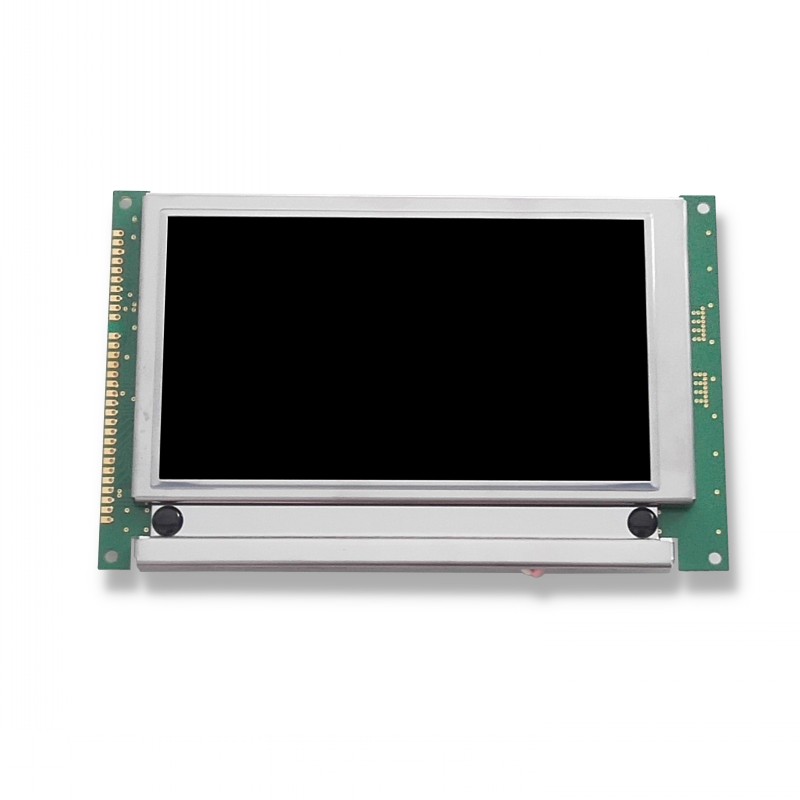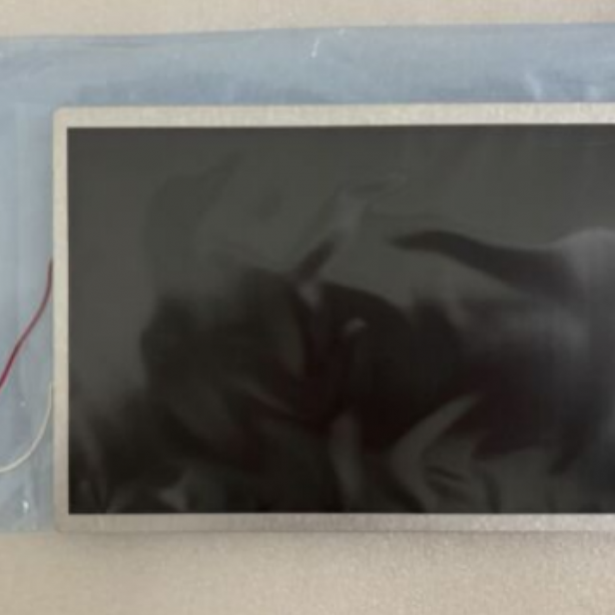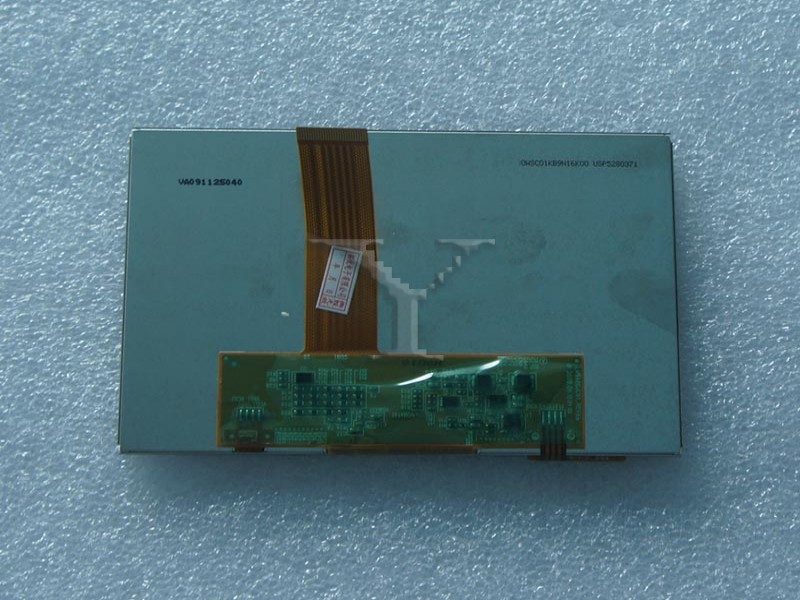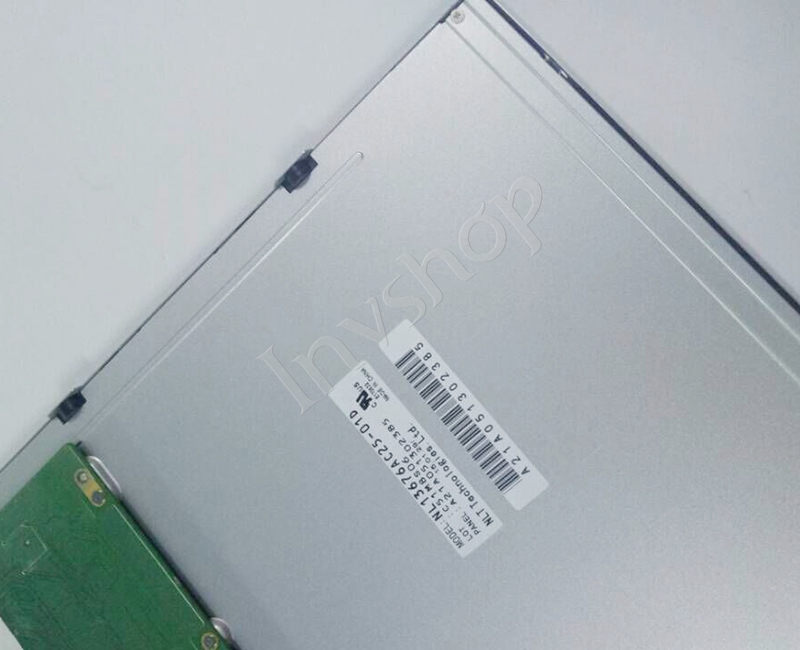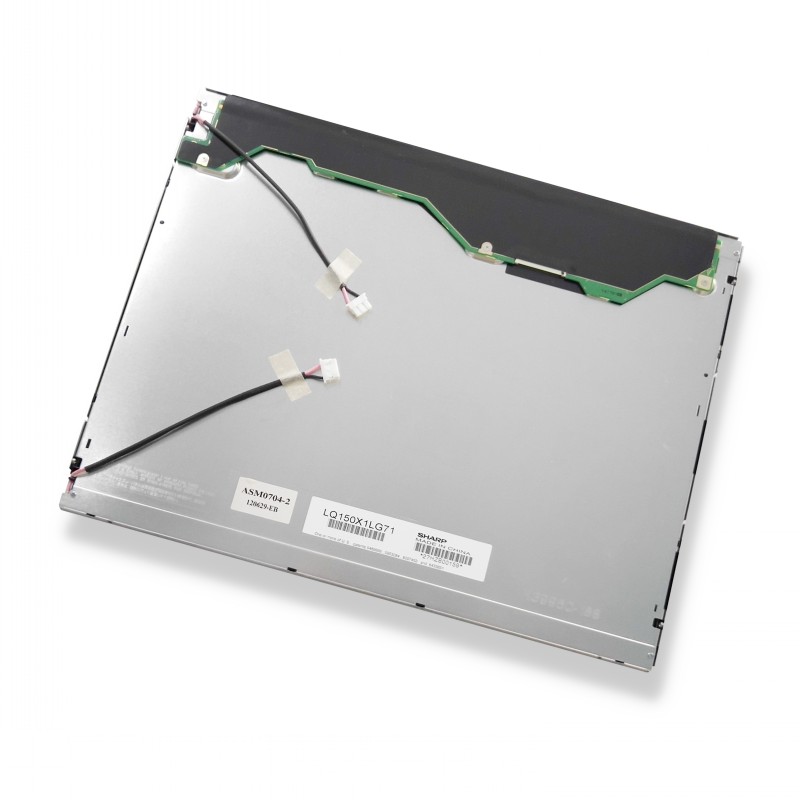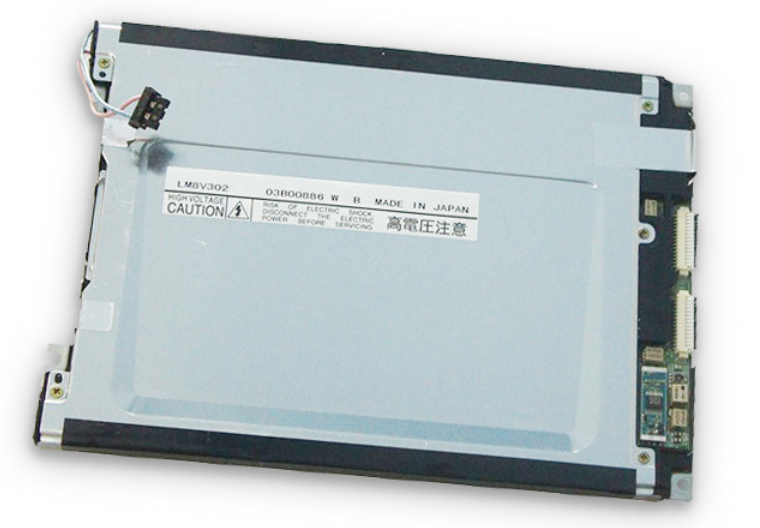All Categories
- Industrial LCD display
-
Industrial Products
- DC Servo Drive
- AC Servo Drive
- other
- Heidelberg
- FANUC
- IFM
- Meter
- CCD
- Membrane Keypad
- Film
- YOKOGAWA Module
- Card
- ABB
- MITSUBISHI
- FANUC
- KEYENCE
- BECKHOFF
- Honeywell
- HOLLYSYS
- FUJI servo drives
- HP
- solenoid valve
- thermostat
- Siemens adapter
- color oscilloscope
- Fujitsu connector
- CHELIC
- SMC
- CISCO Module
- INTEL
- Key board
- FAIRCHILD
- Motherboard
- Board
- Bearing
- other
- Control Panel
- Contactor
- Circuit
- OMRON
- Relay
- Controller
- Photoelectric Switch
- Photoelectric Sensor
- Original
- Fan
- Motor Driver
- Limit Switch
- Amplifier
- power supply
- LENZE
- Cable
- Encoder
- Sensor
- Transformer
- Fiber Optic Sensor
- Protection Relay
- Temperature Controller
- Proximity Switch
- Switch Sensor
- Siemens
- Industrial board
- HMI Touch Glass
-
HMI Full Machine Whole unit
- OMRON HMI Touch Panel
- Siemens HMI Touch Panel
- Mitsubishi HMI Touch Panel
- Allen-Bradley automation HMI Touch Panel
- DELTA HMI Touch Panel
- EVIEW DELTA HMI Touch Panel
- KINCO DELTA HMI Touch Panel
- HITECH HMI Touch Panel
- WEINTECK HMI Touch Panel
- TECVIEW HMI Touch Panel
- WEINVIEW HMI Touch Panel
- PRO-FACE HMI Touch Panel
- SIMATIC HMI Touch Panel
- AMPIRE HMI Touch Panel
- HEIDELBERG HMI Touch Panel
- PANASONIC HMI Touch Panel
- PATLITE HMI Touch Panel
- KYOCERA HMI Touch Panel
- KEYENCE HMI Touch Panel
- WEINVIEW HMI Touch Panel
- HITECH HMI Touch Panel
- FUJI HMI Touch Panel
- HAKKO HMI Touch Panel
- SCHNEIDER HMI Touch Panel
- SAMKOON touch panel
- other
- Module
- lcd inverter
- Membrane Keypad Switch
- Winni Touch Screens
- Frequency Inverter
- Servo Motor
- PLC
Recommended Products
Home » Invshop Info
|
The LCD screen is based on liquid crystal materials as the basic components, between two parallel plates filled liquid crystal material, through the voltage to change the liquid crystal material elements within the row in the situation, in order to achieve the purpose of light and shading to display different shades, a patchwork of image and as long as between two flat plates with three element color filter layer, a color image display. Physical characteristics
LCD screen is a liquid crystal material as the basic component, because the liquid crystal is between the solid and liquid,
Not only has the optical properties of solid crystal, but also has the characteristics of liquid flow, so it can be said to be an intermediate phase. To understand the photoelectric effect of liquid crystal, it is necessary to explain the physical properties of liquid crystal, including its viscosity (visco-sity) and elasticity (elasticity) and its polarization (polarizalility).
The viscosity and elasticity of liquid crystal from the viewpoint of fluid mechanics can be said to be a liquid with arrangement nature, in accordance with the different direction of the force, there should be different effects. As will put a short sticks thrown into the flow of the river, short sticks with the river flow initially appear messy, after a while, all short sticks of long axis are natural become aligned with the direction of the flow of the river, which means that viscosity minimum flow, and flow dynamic free energy minimum of a physical model. In addition, the liquid crystal in addition to the viscosity of the reaction, but also has the flexibility of the reaction, they are applied to the force, showing the direction of the effect. So the light into the liquid crystal material, is bound to be in accordance with the arrangement of the liquid crystal molecules, resulting in a natural deflection. As for the electronic structure of liquid crystal molecules, have a very strong electron conjugated athletic ability, so when the liquid crystal molecules are subjected to external electric field effect, it will be very easy to be due to polarization induced dipolar induced dipolar), which is the liquid crystal molecules between each other force source. And general electronic products used in liquid crystal display, is the use of liquid crystal photoelectric effect, by means of the external voltage control, and through the refraction characteristics of liquid crystal molecules, and the light rotation ability to obtain bright and dark conditions (or known for visual optical contrast), and then to imaging purposes.
Working principle
In simple terms, the basic principle of the screen can be displayed in the two parallel plate between the filling of liquid crystal materials,
Over voltage to change the arrangement of molecules within the liquid crystal material, in order to achieve the purpose of light and shading to display different shades, a patchwork of image and as long as between two flat plates with three element color filter layer, a color image display.
Know its structure and principle, understand the technology and process characteristics, can be targeted in the purchase, in the application and maintenance of more scientific and reasonable. Liquid crystal is a kind of organic compound, which is composed of long rod like molecules. In the natural state, the long axes of these rod like molecules are roughly parallel.
The first feature is LCD must be between the planar liquid crystal filled in two columns with slots to work properly. Groove in the two planes perpendicular to each other (90 degree intersection), that is, if a plane molecular north and south to the arrangement, another plane molecular things to the arrangement, and is located in between two planar molecules are forced into a 90 degree turn. As the light along the direction of the spread of the molecule, so the light through the liquid crystal has been reversed 90 degrees. But when the liquid crystal is added with a voltage, the molecules will be re aligned, so that the light can be directly out, without any twisting.
The second characteristic of LCD is that it depends on the polarization filter and the light itself, and the natural light is in all directions,
The polarizing filter is actually a series of more and more thin parallel lines. These lines form a net, blocking all the light that is not parallel to the line, and the line of the polarizing filter is exactly the same as the first one, so it can completely block the light that has been polarized. Only the lines of the two filters are completely parallel, or the light itself has been turned to match with the second polarizing filters, and the light can penetrate. On the one hand, LCD is made up of two mutually perpendicular polarized filters, so in the normal circumstances should block all attempts to penetrate the light. However, due to the two filters is full of twist nematic liquid crystal, so after the light wear out the first filter, liquid crystal molecules rotate 90 degrees by. Finally, from the second filter piercing. On the other hand, if you add a voltage to the liquid crystal, the molecules will rearrange and completely parallel, so that the light will not be reversed, so it is just blocked by second filters. In short, the power to block the light, without electricity, so that the light emitted. Of course, you can also change the LCD of the liquid crystal array, so that the light emitted when the power is added, but not when the power is blocked. But because the LCD screen is almost always bright, so only the power of the light blocking scheme to achieve the most power saving purposes.
Common types STNTFT is the abbreviation of "Super Teisted Nematic."It belongs to passive passive matrix LCD, almost all black and white screen mobile phone LCD screen is the material. Color STN LCD screen is in color STN LCD screen on the basis and a color filter and the monochrome display matrix of each pixel is divided into three sub pixels, respectively by color filters to display three colors of red, green and blue, so as to realize the color image. Due to technical limitations, the current STN LCD screen is only 65536 kinds of color, most of the market to see the 4096 color STN products, so STN is also known as pseudo color" TFTTFT is the abbreviation of "Thin Film Transistor",also known as "color".It belongs to the active matrix LCD screen, which is composed of thin film transistor screen. Each of its LCD pixels are driven by the thin film transistor, behind each pixel has four independent of the thin film transistor driving pixels emit colored light, 24bit color depth of true color display. At resolution, TFT LCD screen can reach UXGA (1200 * 1600). TFT array has memory, so after the disappearance of the current will not immediately reinstate, thereby improving the STN LCD screen flicker and fuzzy shortcomings, effectively improve the LCD screen display dynamic picture effect, in static display screen is also more prominent, the advantages of TFT liquid crystal screen is response time than short acting, and colorful, so it is widely used in notebook computers and DV, DC. The TFT LCD screen is relatively high power consumption, and the cost is relatively high. TFD
TFD is the abbreviation of "Thin Film Diode",due to the TFT LCD power consumption is higher and higher cost, thereby greatly increasing the cost of the product, so the Epson specifically for the development of mobile phone screen the TFD technology, it is equally active matrix LCD screen, each pixel LCD are equipped with a single diode, for each pixel is individually controlled, make each pixel do not affect each other, which can significantly improve the resolution, dynamic picture and gorgeous colors can be shown without smearing.
In terms of performance, TFD LCD screen, taking into account the advantages of the TFT and STN LCD screen, TFD LCD screen is higher than the STN LCD screen brightness, and the color is more bright, also more power efficient than TFT LCD screen, but on the color and brightness than TFT LCD inferior to some.
Related parameters Resolution
Resolution is a very important performance indicator. It refers to the number of points in the horizontal and vertical direction on the screen (the number of lines and surfaces that are displayed on the screen), the higher the resolution, the more information that can be contained within the same screen. For a 1280x1024 to support the resolution of CRT, whether it is 1280x1024 or 320x240 resolution, can be more perfect performance (because the beam can do elastic adjustment). But its maximum resolution is not necessarily the most appropriate resolution, because if a 17 inch display to a resolution of 1280x1024, windows fonts will be very small, a long time, the eyes will be prone to fatigue, so a 17 inch display the best resolution should is 1024x768.
But for LCD it's not. The maximum resolution of LCD is its true resolution, that is, the best resolution. Once the set resolution is less than the true resolution (such as 15 inch LCD, its true resolution is 1024x768, and WINDOWS in the resolution of 800x600), then there will be two kinds of display. First, the center shows that only the middle of the 800x600 LCD points will display the image, the other did not use the point will not shine, keep the dark background, it looks like the picture is centered. The other is an extension of the display, this way will be used to screen every pixel, but because the pixels are prone to distortion, so it will have a certain effect on the display. So in any case in the selection of LCD should pay attention to the resolution is not the bigger the better, but appropriate to use.
Visual area Visual area refers to the area of the part of the screen that can be used to display an image in a practical application. Because the size of the CRT display is actually the size of the picture tube, can be used to display the image part of the size of this size, because the frame of the picture tube for a part of the space. Generally speaking, the 17 inch CRT display of the visual area of about 15.8-16 inches, while the 15 inch monitor viewing area is only about 13.8 inches. But for the LCD, nominal size basically is visual area size, is border occupied the space is very small, the 15 inch LCD viewing area approximately 14.5 inches, which is why LCD seems to be greater than some of the same size CRT. So when buying LCD 15 inches is basically enough. Color When it comes to color, LCD can not be compared to the CRT, in theory, CRT can show the same color as the TV for unlimited. The LCD can display about 26 million colors, the vast majority of products are claimed to be able to display 16.77 million colors (16777216 colors, 32 bits), but in fact is the jitter (dithering algorithm to achieve, and true 32-bit color compared to still have a big gap, so the color of the table present force and the transition is still less than the traditional CRT. The same token, LCD in the performance of the gray level of the ability is not as good as CRT. You can own comparison: looking for a 17 inch Trinitron CRT monitor, to put a 15 inch LCD, also display 16.77 million colors in the images. CRT display screen is very bright, while the LCD is some "false", although not say where is wrong, but seeing is not the Longguan CRT comfortable. |





